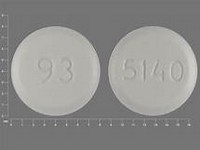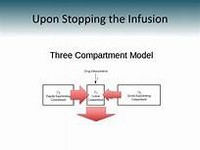Procarbazine

CLINICAL USE
Antineoplastic agent:Main indication is Hodgkin’s diseaseDOSE IN NORMAL RENAL FUNCTION
250–300 mg daily in divided doses; begin with small dosesMaintenance: 50–150 mg dailyPHARMACOKINETICS
DOSE IN RENAL IMPAIRMENT
GFR (mL/MIN)
DOSE IN PATIENTS UNDERGOING RENAL REPLACEMENT THERAPIES
IMPORTANT DRUG INTERACTIONS
Potentially hazardous interactions with other drugsADMINISTRATION
Reconstition
–Route
OralRate of Administration
–Comments
–OTHER INFORMATION
After oral absorption, the drug appears to be rapidly and completely absorbed. Procarbazine is metabolised to an active alkylating agent by microsomal enzymes in the liver. After 24 hrs up to 70% of a dose is recovered in the urineNadir for bone-marrow depression is 4 weeks with recovery within 6 weeks For 48 hours after dose, wear protective clothing to handle urine. Increased toxicity reported in patients with renal impairment
See how to identify renal failure stages according to GFR calculation
See how to diagnose irreversible renal disease
Home








